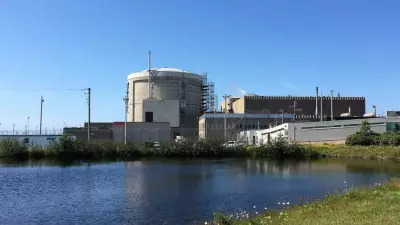
The much-touted Ring of Fire mining development in Northern Ontario's remote James Bay Lowlands is facing growing skepticism about its ability to deliver the economic prosperity that governments have been promising for over a decade. Despite political enthusiasm and substantial taxpayer investment, this mineral-rich region remains largely inaccessible and mired in challenges.
The Infrastructure Obstacle
At the heart of the Ring of Fire's problems lies a fundamental infrastructure deficit. The proposed mining zone exists in complete isolation—no roads, no power lines, and no reliable transportation networks connect this wilderness to existing industrial corridors. Building the necessary all-weather roads alone represents a monumental undertaking, with costs escalating into the billions.
Current government estimates suggest a staggering $1 billion price tag just for initial road access, a figure many experts consider optimistic given the challenging terrain and environmental considerations. The business case becomes increasingly questionable when factoring in the additional billions required for power infrastructure and processing facilities.
Indigenous Partnerships: Promise vs Reality
The Ontario government emphasizes its commitment to working with First Nations communities, but the reality on the ground tells a different story. Many Indigenous leaders express frustration with the consultation process, citing concerns about environmental impacts on traditional lands and inadequate benefits sharing.
Several key First Nations communities have withdrawn from negotiations or expressed strong opposition to current development plans. Without genuine partnership and consent from these communities, the project faces significant legal and social hurdles that could delay development for years, if not decades.
Economic Viability Under Scrutiny
Proponents champion the Ring of Fire as a critical source of minerals for the electric vehicle revolution, particularly chromite for stainless steel and nickel for batteries. However, global market conditions have shifted dramatically since the project's inception.
- International competition from established mining jurisdictions
- Volatile commodity prices affecting long-term profitability
- High operating costs in remote northern locations
- Increasing environmental compliance expenses
Major mining companies have demonstrated caution, with several scaling back involvement or delaying investment decisions pending clearer economic prospects and resolution of infrastructure challenges.
Political Promises vs Practical Realities
Successive Ontario governments have treated the Ring of Fire as an economic panacea for the province's north, making bold claims about job creation and regional transformation. The current administration continues this pattern, allocating substantial funds and creating development corporations to advance the project.
However, critics argue that political enthusiasm has outpaced practical planning. The timeline for meaningful development continues to stretch further into the future, while promised benefits remain elusive for local communities that desperately need economic opportunities.
Environmental Considerations
The James Bay Lowlands contain one of the largest peatland complexes in the world, serving as a significant carbon sink and supporting unique biodiversity. Large-scale mining operations would inevitably impact this fragile ecosystem, raising questions about balancing economic development with environmental protection.
The region's extensive wetlands and complex hydrology present particular challenges for mining operations and environmental management, adding another layer of complexity to an already daunting development proposition.
The Path Forward
For the Ring of Fire to become economically viable, several critical conditions must be met:
- Substantial public investment in transportation infrastructure
- Genuine partnership and benefit agreements with First Nations
- Improved global market conditions for target minerals
- Major private sector investment commitment
- Environmental management plans acceptable to multiple stakeholders
Until these fundamental requirements are addressed, the Ring of Fire seems destined to remain more political talking point than practical economic driver—a symbol of potential rather than a source of prosperity for Northern Ontario.





